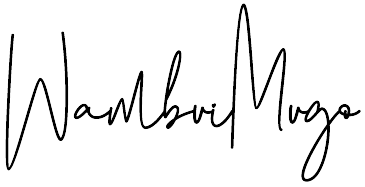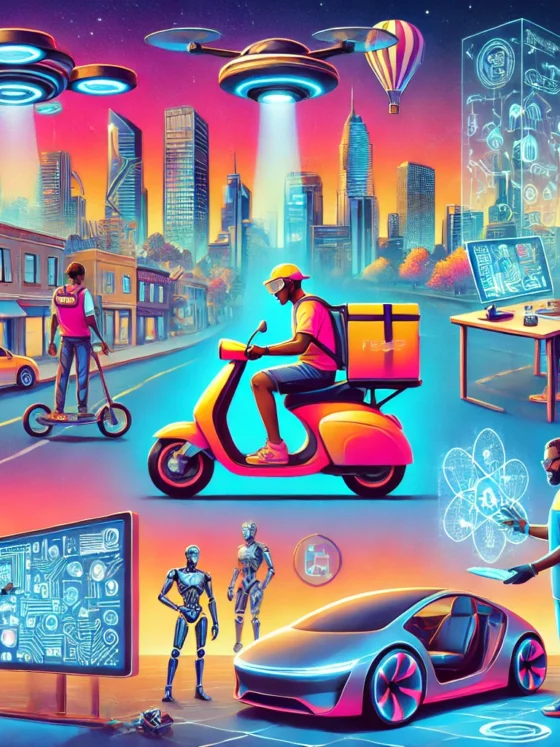How to Write for a Gen Z/ Millenial Audience (with Examples)

“Dear customer, we appreciate your business.”
Nope. Delete that. Start over.
If your writing sounds like a customer service email from 2005, Gen Z and Millennials have already scrolled past it. They don’t want stiff, robotic language. They crave personality, authenticity, and brands that talk to them like real people.
Think about it: When was the last time you stopped mid-scroll for something that sounded corporate? Probably never. But you do stop for content that feels real—witty tweets, relatable memes, bold headlines, and brands that don’t sound like they’re trying too hard.
So, if you’re a freelance copywriter looking to capture (and keep) their attention, you need to shift your approach. This guide will break down:
- How Gen Z and Millennials consume content differently.
- What not to do when writing for them (common mistakes).
- Proven strategies (with examples!) to make your copy pop.
- How to balance authenticity with brand messaging.
By the end of this post, you’ll know exactly how to craft words that connect—without sounding forced. Let’s dive in.
Key Differences Between Gen Z and Millennials
Gen Z and Millennials may seem similar, but they consume content, interact with brands, and make purchasing decisions differently. Here’s how they compare:
- Brand Loyalty vs. Brand Experience
- 90% of millennials value brand authenticity and long-term loyalty.
- Gen Z prioritizes value, convenience, and personal relevance over brand names.
- Search Habits: Google vs. Social Media
- Millennials Google products, read blogs and check reviews.
- Gen Z searches on TikTok, Instagram, and YouTube for quick, visual answers.
- Influencers vs. Traditional Marketing
- Millennials trust brand websites and expert reviews.
- Gen Z trusts influencers and relatable creators for product recommendations.
- Shopping Habits: Traditional vs. Social Commerce
- Millennials shop via brand websites and marketplaces.
- 83% of Gen Z buys directly from social media platforms like TikTok and Instagram.
- Attention Spans: Shorter vs. Even Shorter
- Millennials can handle slightly longer content.
- Gen Z skims fast—you have seconds to capture their attention.
- Time Spent Online: High vs. Constant
- Millennials balance online and offline life.
- Gen Z is always connected, multitasking across multiple platforms.
How Gen Z and Millennials Consume Content
If you’re writing for Gen Z and Millennials, forget everything you know about traditional content consumption. These generations don’t read content the way older audiences do—they skim, scan, and engage only if something grabs their attention immediately.
As a freelance copywriter, you need to adapt. Here’s how these generations consume content and what that means for your writing.
1. They Don’t Read—They Scan
Growing up in the fast-paced digital era, Gen Z is wired for quick processing and constant adaptation. But reading? Not so much. A Library Journal survey found they read the least, with only 36.3% calling themselves avid readers. And even when they do, a study by Best By Numbers says they average just 7 minutes per hour—the lowest of any generation.
That means your audience isn’t reading long paragraphs. They’re skimming for value and deciding in seconds whether your content is worth their time.
- Keep sentences short and direct.
- Use bullet points, bold text, and subheadings to break up content.
- Start strong—your first sentence should immediately capture attention.
Don’t write this in your portfolio:
“I am a passionate and results-driven copywriter who specializes in crafting compelling and engaging content for brands seeking to enhance their digital presence and connect with their audience.”
Write this instead:
“I write copy that gets clicks, conversions, and customers. Need content that sells? Let’s talk.”
2. They Prefer Visual and Interactive Content
A HubSpot study found that 72% of Gen Z and Millennials prefer watching videos over reading text when learning about a product. If your writing isn’t visually engaging, they won’t stick around.
- Write like you’re crafting a social media caption—short, punchy, and engaging.
- If the format allows, break up text with visuals, GIFs, or infographics.
- Use white space strategically to make reading effortless.
Don’t write this in an outreach email:
“I would love the opportunity to collaborate with your team to create high-quality, engaging content that aligns with your brand’s voice and vision.”
Write this instead:
“I noticed your blog hasn’t been updated in a while—want help creating content that gets traffic? I write SEO-friendly articles that drive results. Let’s chat.”
3. They Value Authenticity (And Can Spot Fake From a Mile Away)
Gen Z and Millennials have grown up in an era of overproduced advertising and AI-generated content. If your writing sounds generic, salesy, or overly polished, they won’t trust it.
- Ditch the corporate tone—write how you talk.
- Use conversational language that feels natural and personal.
- Be upfront about your services and pricing (no vague promises).
Don’t write this in your website bio:
“I am dedicated to helping brands maximize their potential through creative and strategic content solutions.”
Write this instead:
“I help brands tell their story with copy that converts. No fluff, no jargon—just words that work.”
4. They Engage With Content That Feels Personal
Unlike older generations who consume content passively, Gen Z and Millennials expect interaction. They want to feel like they’re part of the conversation.
- Ask questions and invite responses.
- Use “you” more than “I” to make your content about the reader.
- Use real-life examples that they can relate to.
Don’t write this in a social media post:
“Content marketing is essential for business growth. Brands that use it effectively see higher engagement and better conversions.”
Write this instead:
“What’s the hardest part about landing new clients—writing the perfect pitch or setting your rates? Let’s talk about it.”
How to Write for Both Gen Z and Millennials
- Understand Their Values and Interests
- Millennials are drawn to purpose-driven brands that champion values like equality, transparency, and mindful consumption. They look for brands that align with their personal beliefs.
- Gen Z, however, cares about empowerment, individuality, and growth. They want to see how a product can enhance their lives in real, tangible ways.
Examples:
- For Millennials, say something like: “At (your brand), we’re committed to reducing plastic waste. Every purchase you make supports sustainable packaging.” This hits their desire to be part of the solution.
- For Gen Z, focus on self-improvement. For example: “Our online course helps you become a coding pro in just 3 months. Whether you’re just starting out or looking to level up, we’ve got your back.”
- Use an Engaging, Conversational Tone
- Millennials enjoy a conversational tone but prefer it balanced with professionalism. They want to feel like they’re part of a community but also expect useful information.
- Gen Z prefers more relaxed, down-to-earth language. They don’t want fluff; they crave directness and an informal feel.
Examples:
- For Millennials, you could say: “Building your side hustle while balancing work and family? We’ve got your back. Here’s how you can set boundaries to protect your time.”
- For Gen Z, try something like: “We know the grind is real. Here’s how you can actually enjoy your hustle without burning out. Tip #1: Take breaks. Your brain will thank you.”
- Keep It Relevant and Provide Value
- Millennials tend to seek information that can help them in their personal growth and life balance. Content that provides them with resources, tips, or how-to guides resonates deeply.
- Gen Z values content that’s quick, actionable, and relatable. They want things that help them solve immediate problems.
Examples:
- For Millennials, a blog post titled “5 Strategies for Managing a Remote Career While Raising Kids” offers value that aligns with their everyday struggles.
- For Gen Z, you could create a TikTok video with the caption: “Quick hacks to help you finish that paper faster. You can thank me later.”
- Tell Compelling Stories
- Millennials gravitate toward narratives that inspire and educate. They want to connect with a brand’s journey or hear stories about overcoming challenges.
- Gen Z prefers realness and authenticity in storytelling. They are moved by stories that feel genuine and relatable, especially those that show growth or resilience.
Examples:
- For Millennials, share a customer success story like: “How Jane, a busy mom and entrepreneur, used our product to launch her business while maintaining work-life balance. Here’s her journey.”
- For Gen Z, you could share a story that shows how a young entrepreneur overcame obstacles: “Meet Sarah, who turned her passion for gaming into a career—and how you can do it too.”
- Use Influencers and User-Generated Content
- Millennials still love seeing expert endorsements and reviews, but they also like hearing from real people who use the product. They trust recommendations that feel authentic.
- Gen Z is all about peer recommendations. They prefer to see micro-influencers or everyday users talking about how products help them.
Examples:
- For Millennials, collaborate with a trusted industry expert for an Instagram Live: “Join us for a live session with (Industry Expert) where we talk about the future of freelancing and how to stay ahead of the curve.”
- For Gen Z, create a TikTok challenge that encourages users to share how they use your product: “Show us your ‘Study with Me’ setup using our productivity tools. Best setup wins a free subscription!”
- Stay Updated with Trends and Pop Culture
- Millennials enjoy content that taps into current societal shifts or trends that affect their lives—especially when it comes to wellness, parenting, or career advancement. They also appreciate some nostalgia from their youth.
- Gen Z thrives on internet culture, meme-based humor, and viral trends. They’re also quick to latch onto social movements that match their values.
Examples:
- For Millennials, you could tie your content to recent self-care trends: “The new way to work smarter, not harder. Check out our time-management strategies inspired by the latest wellness movements.”
- For Gen Z, use the latest viral meme or trend: “You know that feeling when you finally finish all your tasks on time? Yeah, that’s us right now. #GoalCrushed”
- Focus on Personalization
- Millennials appreciate content that feels tailored to their lives. Whether it’s customized product suggestions or step-by-step guides, they want content that feels personal and aligns with their needs.
- Gen Z likes personalization, but they want to feel that a brand understands them as individuals. This means offering content that speaks to their immediate goals and self-expression.
Examples:
- For Millennials, offer a personalized guide on how to balance work with mental health: “Download our free e-book on balancing productivity with mindfulness, tailored for busy professionals like you.”
- For Gen Z, provide an interactive experience: “Take our quiz to find out which productivity tool best matches your lifestyle. The results are personalized just for you!”
Conclusion
Crafting copy that resonates with Gen Z and Millennials is all about speaking their language and understanding what drives them. By staying authentic, offering value, and keeping things real, you can connect with these generations in a way that feels natural and impactful. With the right approach, you’ll build trust and drive real results.
Looking for more tips on how to create compelling content for younger audiences? Check out this blog post that dives into the essentials!
If you’re serious about boosting your copywriting skills, don’t forget to check out our expert courses here to get started!











